
Birding Around Las Vegas, Outside the Las Vegas Valley

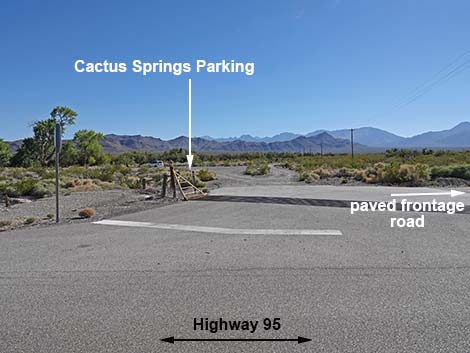 Cactus Spring road (view S from Highway 95) |
Description Cactus Springs is one small water hole atop a spring-mound, a few cottonwood trees, honey mesquite thickets, and other shrubs, all of which are set in a vast expanse of flat, lower-elevation Mojave Desert scrub. In the old days, there were at least two springs (with pools, but no running water), and during wet years, perhaps more. The area is not pristine, as it has been heavily used by humans for years. The springs are on public property, but they are adjacent to Highway 95, next to a small housing area and some failed commercial developments, and next to the Temple of Sekhmet (a fertility shrine, which adds an interesting flavor to the area). The BLM currently is restoring the site, so it will be fun to watch the native vegetation as it grows back and provides more habitat for birds and other wildlife. [Note: the effort more-or-less failed.] This is not a destination birding site, but it is a nice place to stop for a few minutes, stretch the legs, and see who is flying about. Link to map. |
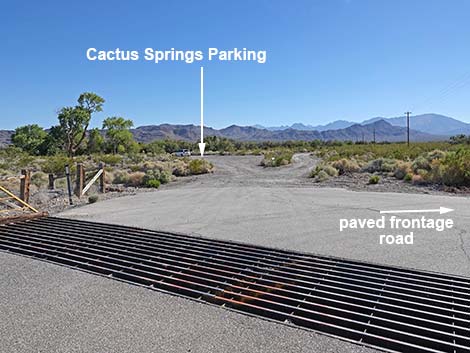 Cactus Spring Road crosses cattle guard (view S) |
Location Cactus Springs is located along Highway 95, about 60 miles northwest of Las Vegas. To get there from Las Vegas, drive north on Highway 95 for most of 1 hour to the town of Indian Springs. Continue northwest through Indian Springs, paying attention to the 35 mph speed limit. Continue northwest for a couple of miles to a grove of cottonwood trees on the left side of the road. The springs are located beneath the southeast-most cottonwood trees. Turn left at the first of two places to turn into Cactus Spring. The parking area is located by the first trees on the left (Table 1, Site 576). There is a gate where birders can get through the fence into the spring area. |
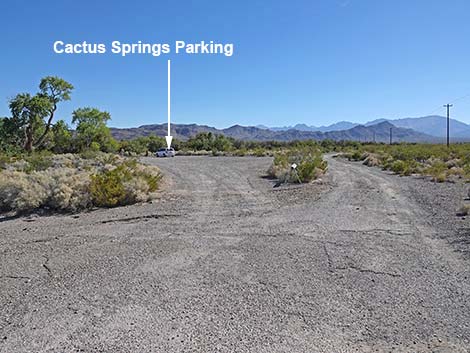 Cactus Spring Road stays left into gravel parking area (view SE) |
Hours Always open (but should be considered day-use). Fees None. |
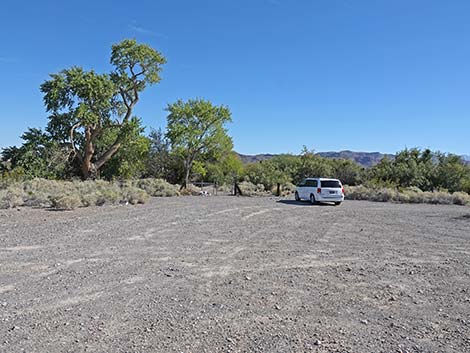 Cactus Spring parking area (view SE) |
Specialties This is a good area to see Phainopepla, Mourning Doves, Common Ravens, House Finches, and other desert species as they come in for water. During migration, the trees and water attract migrants, including warblers, Accipiters, and an occasional odd flycatchers and Red-shouldered Hawks. Next to Creech Air Force Base, this is also a good place to watch drone aircraft and other advanced military aircraft like stealth bombers and the Thunderbird Air Force aerial demonstration team. |
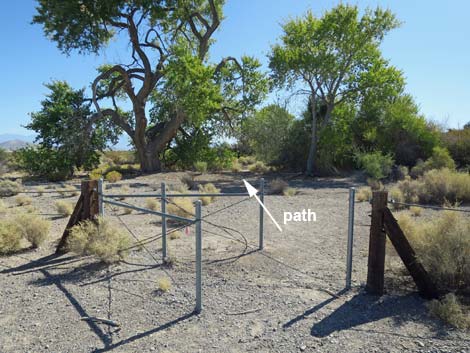 Cactus Spring gate (view SE from the parking area) |
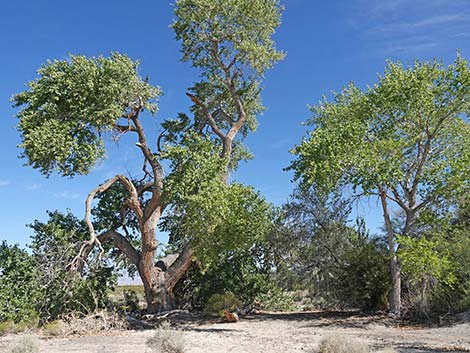 Path to Cactus Spring (view SE) |
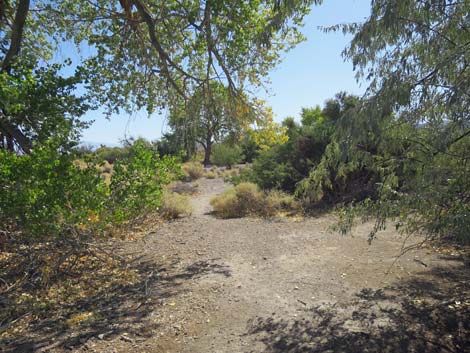 Path to Cactus Spring (view SE) |
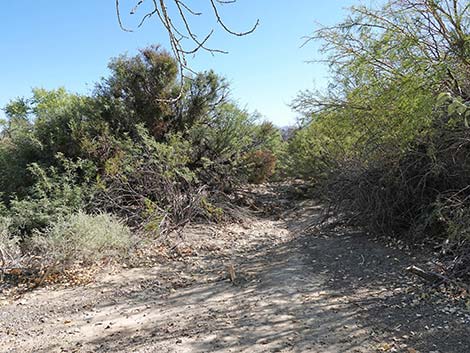 Brush to the right where quail and other ground birds forage (view S) |
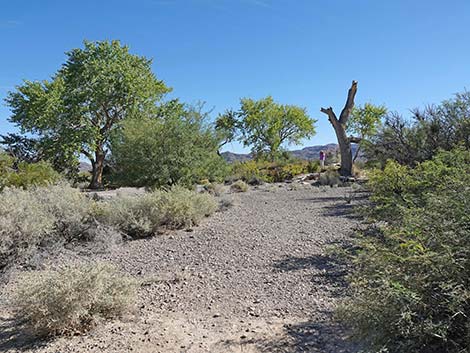 Path to Cactus Spring (view SE) |
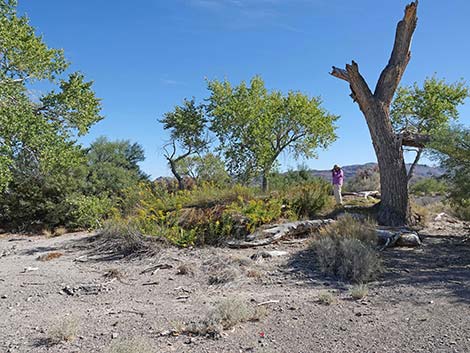 Birder on Cactus Spring spring-mound (view SE) |
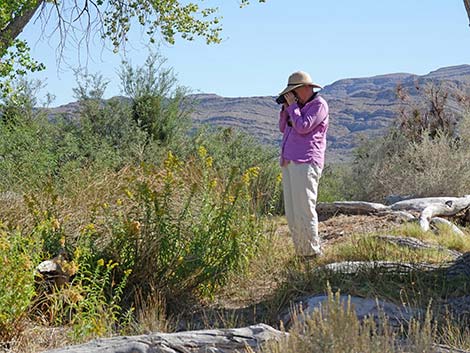 Birder looking into Cactus Spring pool (view SE) |
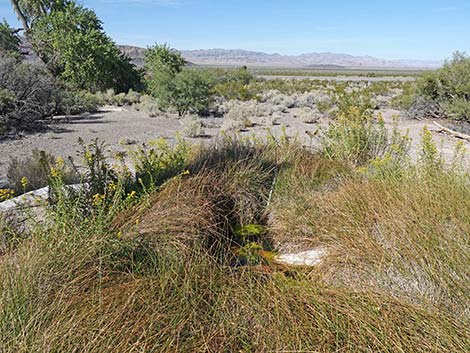 Cactus Spring: a tiny spot of open water (view N) |
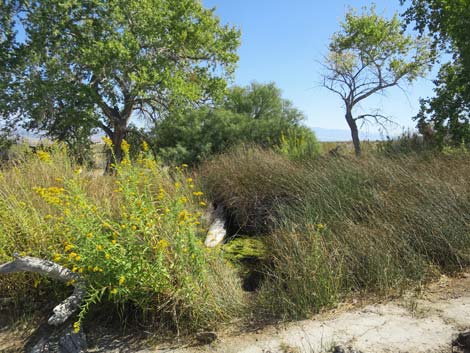 Cactus Spring (view SE) |
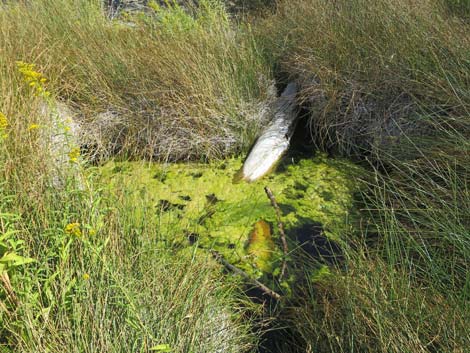 Cactus Spring (view E) |
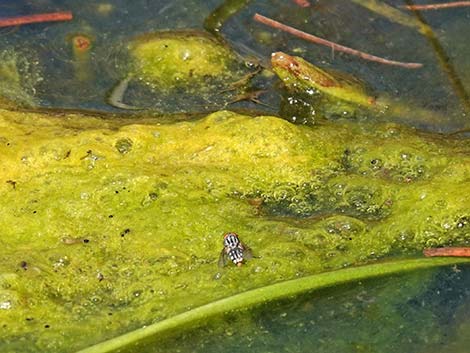 Curious fly species and algae in the spring pool |
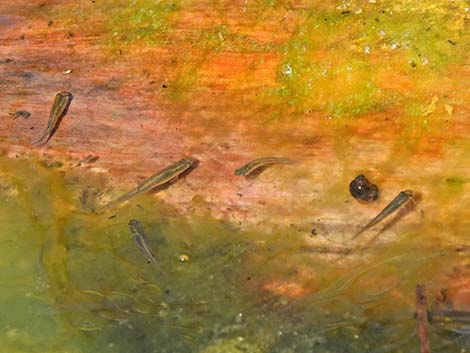 Mosquito Fish in the spring pool |
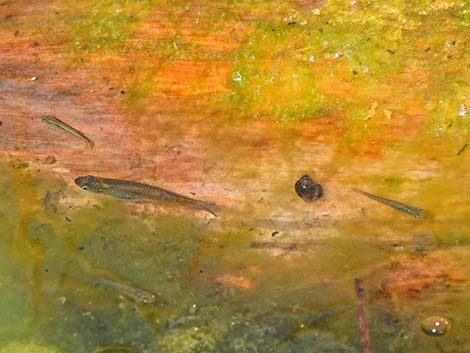 A Spring Snail (Genus Physella) in the spring pool |
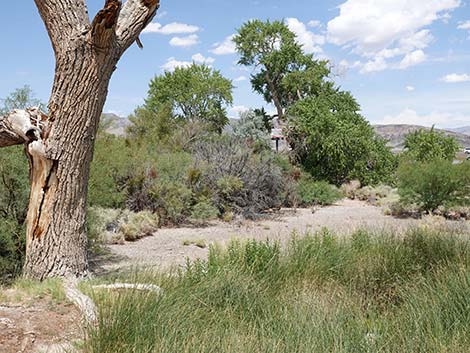 Cactus Spring (view NE) |
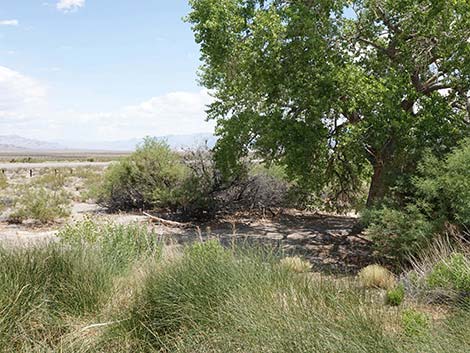 Cactus Spring (view N) |
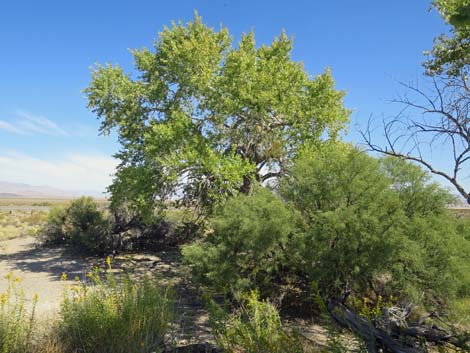 Trees adjacent to Cactus Spring (view NE) |
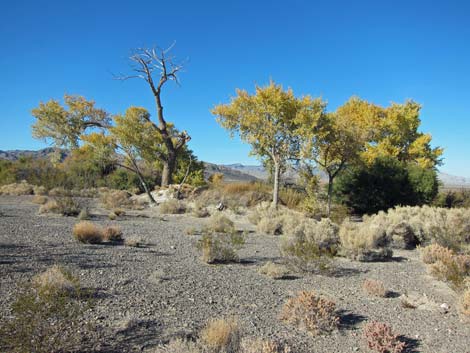 Fall colors at Cactus Spring |
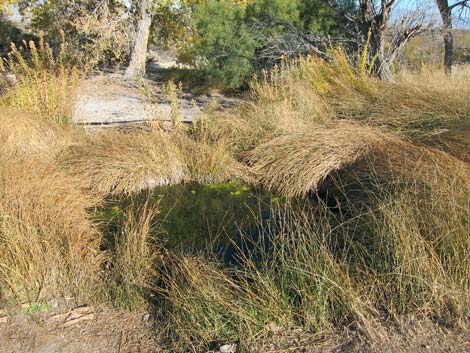 Fall colors at Cactus Spring |
Departing Cactus Springs
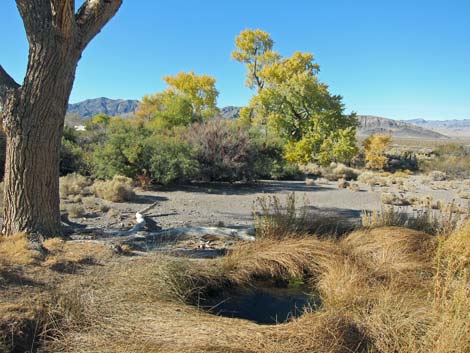 Departing Cactus Springs |
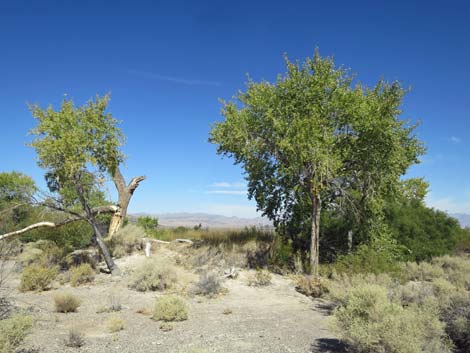 Cactus Spring (view N) |
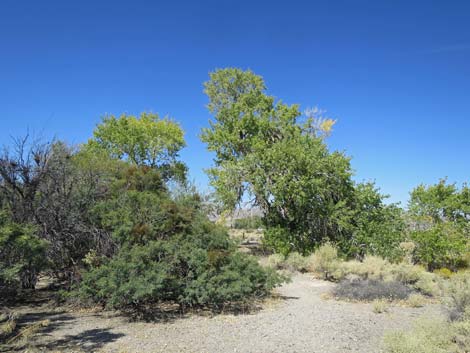 Exiting the spring area (view NW) |
 Returning to the parking lot (view NW) |
Table 1. GPS Coordinates for Highway Locations (NAD27; UTM Zone 11S). Download Highway GPS Waypoints (*.gpx) file.
| Site # | Location | Latitude (°N) | Longitude (°W) | UTM Easting | UTM Northing | Elevation (feet) | Verified |
|---|---|---|---|---|---|---|---|
| 576 | Cactus Springs | 36.5773 | 115.7226 | 614285 | 4048539 | 3,237 | Yes |
Happy birding! All distances, elevations, and other facts are approximate.
![]() ; Last updated 241020
; Last updated 241020
| Birding Around Las Vegas | Southern Nevada Birds | Guide Service | Copyright, Conditions, Disclaimer | Home |